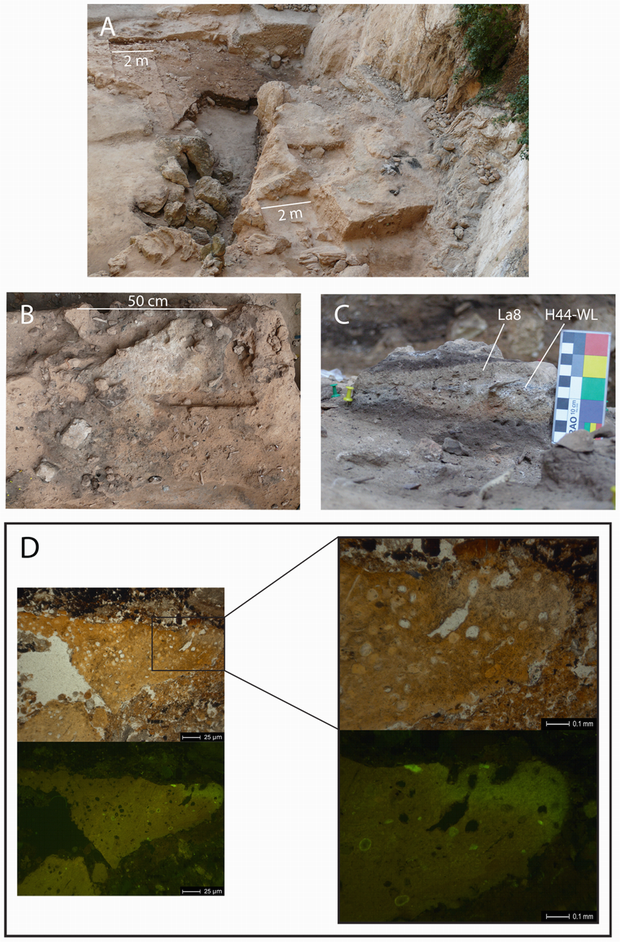Neanderthals from Spain may have consumed more vegetables than previously thought, according to a dietary reconstruction.
Obviously, Neanderthal diet reconstruction remains difficult because they didn't farm. They may have eaten whatever they could find which skews results somewhat. And current methods of dietary analysis use isotopes and focus on the role of meat in the diet, which may be overemphasized.
For instance, some evidence suggests that plants may have contributed to their diet. To better understand contributions to the Neanderthal diet, the authors of this study used analytical techniques to quantify fecal biomarkers from five samples found in El Salt, Spain, dating back to about 50,000 years ago. These biomarkers can help researchers identify dietary sources by the way dietary sterols are broken down in the mammalian gut.

A) El Salt site during excavation; B) Field photograph showing a detail of exposed combustion structure H44 (white sediment corresponds to the top ash layer). The black sediment to the left belongs to an overlying combustion structure (H32). C) Field photograph of sediment block showing the facies described in the text in microstratigraphic succession. D) Microphotographs of a slightly burned coprolite of putative human origin identified in El Salt Stratigraphic Unit X (sample SALT-08-13). The images under plane polarized light show the pale brown color and massive structure of the coprolite, as well as the common presence of inclusions, which are possibly parasitic nematode eggs or spores. Views under blue light fluorescence (black background) shows autofluorescence indicative of high phosphate content.
doi:10.1371/journal.pone.0101045
The samples in this study may be the oldest known human fecal matter. The analysis suggests that Neanderthals predominantly consumed meat, as indicated by high proportions of a one faecal biomarker formed by the bacterial reduction of cholesterol in the gut (coprostanol), but the authors also found evidence of significant plant intake, as shown by the presence of a compound often found in plant sources (5β-stigmastanol).
In support of the finding, microscopic examination of sediment from the same context yielded the identification of human coprolites. The authors hope that future studies using this biomarker approach may provide further insights into the role of vegetables in the Neanderthal diet.
Lead author Ainara Sistiaga said, "This study represents the first approach to Neanderthal diet through the analysis of fecal markers found in archaeological sediment."






Comments